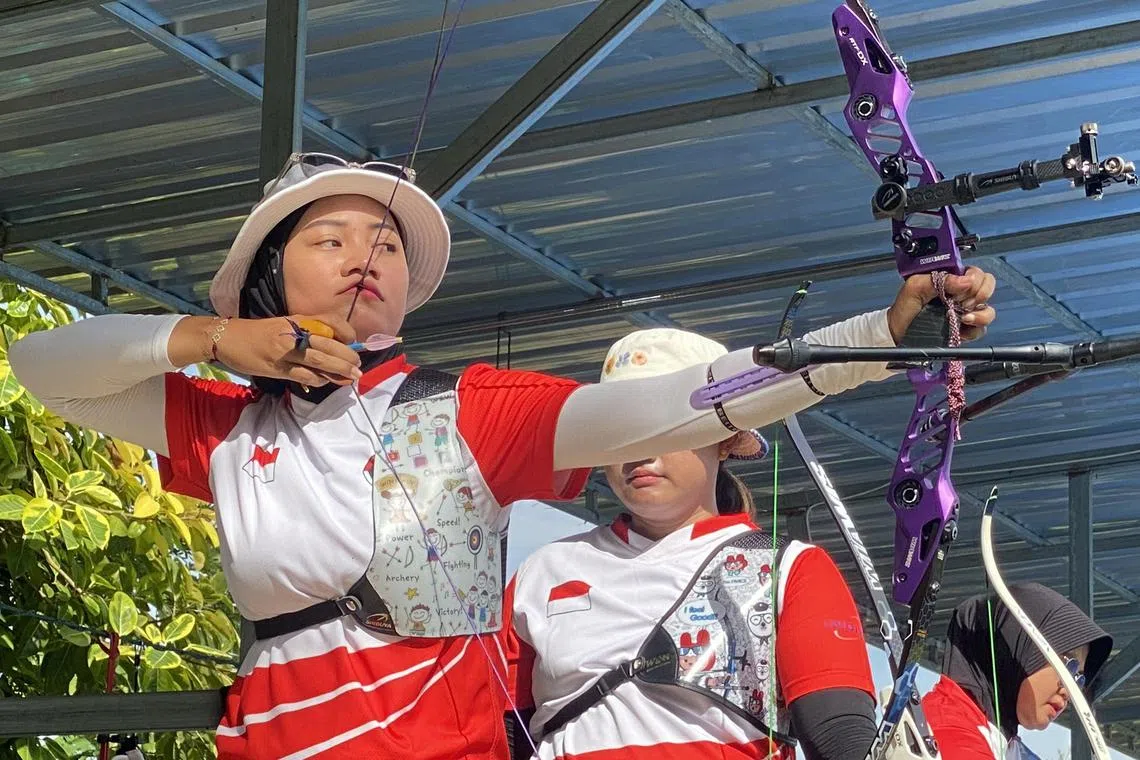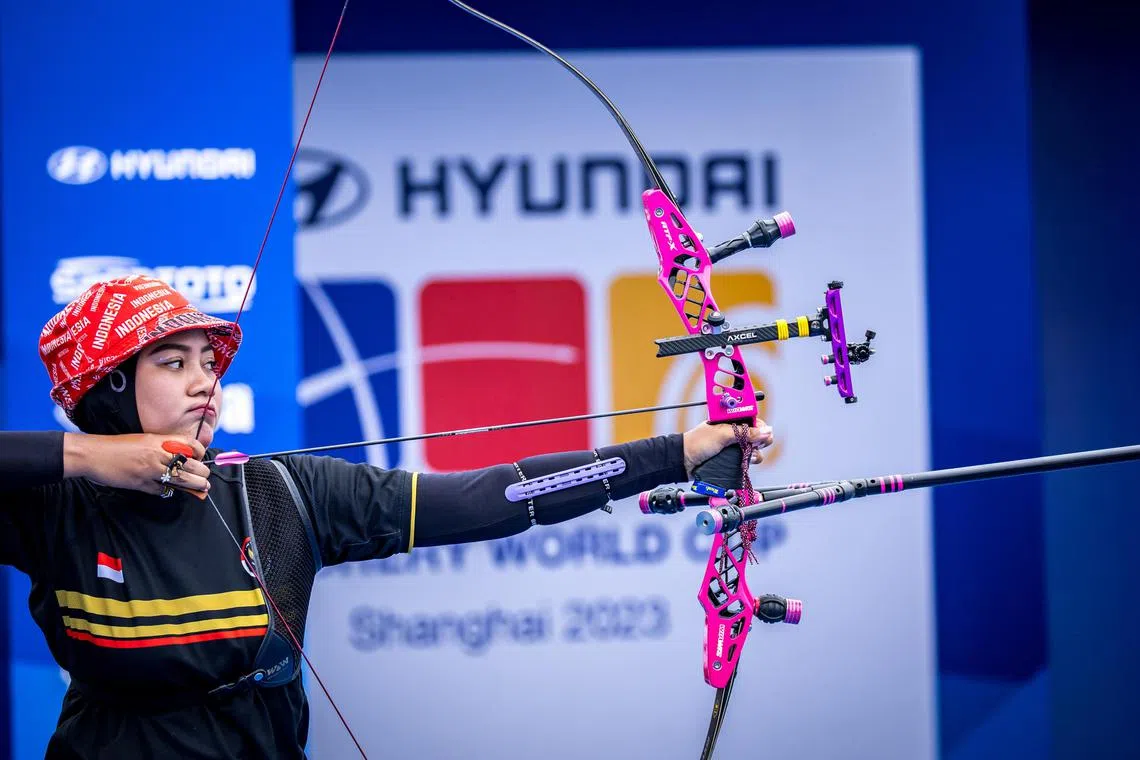Overcoming ADHD, Indonesian archer aims for Olympic glory
Sign up now: Get the biggest sports news in your inbox

Indonesian archer Diananda Choirunisa practises shooting exercises thrice a day.
PHOTO: INDRA YOGA
Follow topic:
CIKARANG, West Java – Archery was never Diananda Choirunisa’s first love.
At the age of six, the girl who practised pencak silat regularly loved a good one-on-one fight.
But a diagnosis of attention deficit hyperactivity disorder (ADHD) when she was eight changed her trajectory. A family shrink advised her to pick up a bow and arrow instead to improve her concentration and help her condition.
“I couldn’t focus on (just) one thing. I couldn’t play with just one toy. I had to have several at the same time,” said the 27-year-old Indonesian, whose father was a national pencak silat athlete and mother was a national archer.
“If it weren’t for my ADHD condition, I wouldn’t have taken up archery. I wasn’t interested in it. I wanted pencak silat. I loved to engage in a fighting bout.”
Speaking to The Straits Times in May 2024, in the lead up to her second shot at the Olympics in Paris, the national archer talked about her journey.
Excelling at archery requires high levels of mental focus, requiring athletes to manage their breathing, concentration and nerves. This might seem impossible for people diagnosed with ADHD, who are typically restless, have trouble concentrating, and may act on impulse.
“It was difficult in the beginning to do archery. I had some medication the doctor gave me to help me concentrate. I only gradually enjoyed archery after a while,” she recalled, adding that she won her first gold medal at a local tournament in Malang, East Java, two years after making the switch.
By the time she was in fifth grade, her condition improved and it was around then that she started doing well at national competitions.
She won a gold medal at the 2013 SEA Games in Naypyidaw and another two at the 2017 SEA Games in Kuala Lumpur. In 2021, Diananda, married to a footballer, bagged three gold medals in Indonesia’s National Games while two months’ pregnant.
And while she did not get any medals from her Olympic debut in Tokyo in 2021, she did pick up an important lesson about nerves.
“I was trembling and felt as if I were floating. If you are not nervous, you might lose. (But) if you are nervous, you will definitely lose. Hence, (I realised after that) there is no reason to get nervous,” she said.
To her, the most memorable competition was the 2018 Asian Games, where she competed against what she termed the “queens of archery”, who hail from South Korea, China and Japan.
“I felt I had nothing to lose. I just fired my arrows with no pressure. I ended up beating South Korea’s Chang Hye-jin, who just won (two golds at) the Rio Games. I got a silver medal,” she said.
China’s Zhang Xinyan took gold.
Diananda made the cut for the 2024 Olympic Games after she clinched a bronze medal in the recurve mixed team with partner Riau Ega Agata Salsabilla at the Asian Games in Hangzhou in 2023.
She practises shooting exercises thrice a day. It adds up to a total of 1,000 arrows shot each day. She also challenges herself by shooting arrows while balancing on a car tyre’s rubber tube and an exercise ball.
While preparation is tough, especially with her aim of getting a gold at the Games, Diananda keeps her spirits up by listening to K-pop and old Indonesian songs during her practices.
Over the years, archery – which was once seen as a niche sport which was out of reach for most people – has become more accessible, said Diananda, noting how some shopping malls now have archery ranges.
There is also, she said, an increasing number of young athletes in the professional archery field, those in their early 20s, which is a stark contrast from when she first started out.

Diananda Choirunisa during the recurve mixed team finals during the Hyundai Archery World Cup 2023 Stage 2 on May 21, 2023, in Shanghai, China.
PHOTO: WORLD ARCHERY FEDERATION
In the future, perhaps after retirement, she has dreams of opening an archery training centre to encourage youth to take up the sport. This includes those who may face personal challenges or health issues like herself, stressing that in archery – like in anything else in life – there is always a way to overcome obstacles.
Even after years of honing her craft, she continues to defy conventional characteristics associated with archery, admitting that she still cannot “stay put”.
She explains that, ironically, placing too much focus while getting ready to shoot actually shatters her concentration, and she usually has to find something to distract her from the pressure.
“That’s why I need to take a glimpse at the sky, at the passing birds as I shoot an arrow,” she said.


